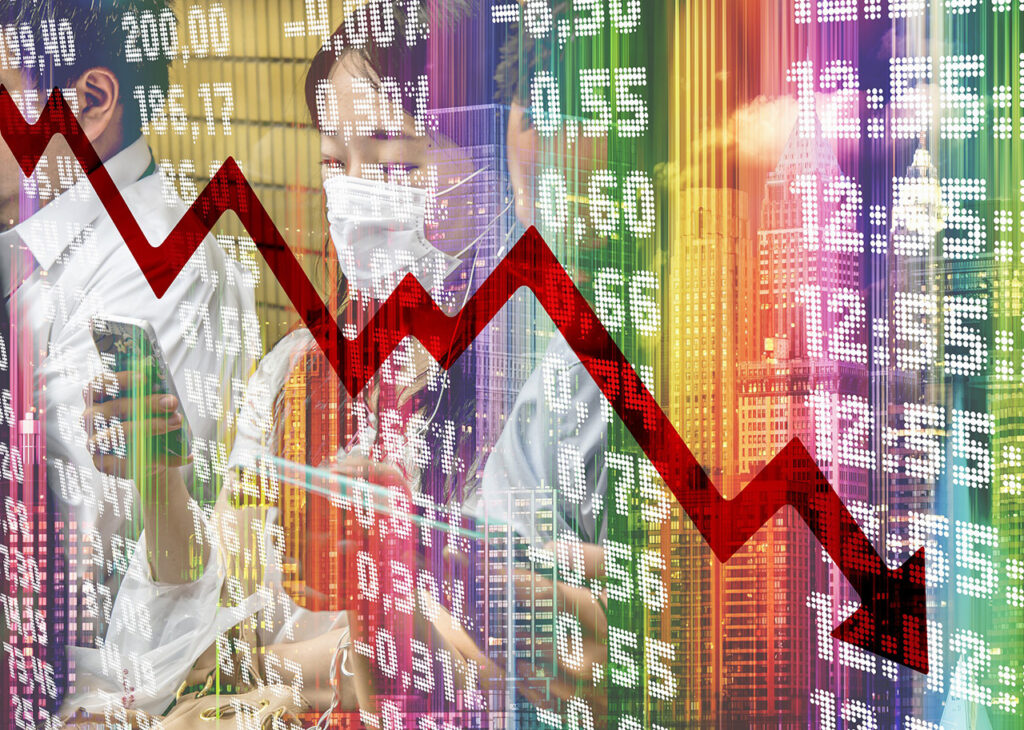COVID Task Force 1: Managing Your Business Under Crisis
The aggressive containment measures of COVID-19 has created a demand shock to our economy. Although a few select industries saw increased demand, revenue across most industries plummeted. While sales teams are resorting to lower prices to stimulate demand, it’s important to recognize this crisis is characterized by a downward shift of the demand curve and not a change in the relative position of your offering on the demand curve. Therefore, price is rarely an effective driver for demand, especially in a B2B environment where demand is fairly inelastic. Under this circumstance, how can businesses protect their revenue?
Since pricing has the most dramatic impact on revenue, it’s more important than ever for companies to step up their pricing practice during this pandemic. Through proper pricing, businesses can prevent price erosion while protecting volume. However, pricing analysts must not overreact to the demand change. Instead, they must work to understand the fundamental driving force behind the demand shift.
How Should You Respond?
The COVID-19 pandemic has catalyzed many downstream events that impact businesses differently. Many service industries are directly impacted because people can no longer conduct their work under a lockdown. Since price can’t change demand in these industries, companies need to establish strong pricing governance to prevent price erosion. Overreacting to this demand drop could lead to a price war that further compresses your margin. If prolonged, this could also lower the price expectation of your buyers and devalue your brand long after the pandemic.
In a different industry, pricing analysts might need to act fast. The restriction on mobility has resulted in a surplus of crude oil. This has driven down its price, so downstream industries (e.g. plastics, chemicals, etc.) will realize a supply cost reduction. Since this affects the entire industry, your competitors can leverage this cost saving to gain a pricing advantage on the demand curve. In this situation, you must act decisively to maintain your competitive position on the demand curve.
Finally, one of the biggest impacts of COVID-19 is the disruption of the supply chain. This has restricted production and also shift the supply curve down. Since the demand drop is accompanied by a supply drop, when both dynamics operate equally, there may not be a need to change prices at all.
If you’re one of the few fortunate ones who have experienced a demand surge from this pandemic, what should you do? Although it’s tempting to raise prices to take advantage of the market, it’s important to weigh the short-term gain against longer-term consequences, such as negative brand perception. In some industries, there may even be laws that prevent price gouging during a crisis (e.g. medical equipment, hand sanitizers, etc.). If you are in this position, at the very least, there is less of a need to discount, run promotions, or offer other non-price incentives that typically drain profits.

The Pricing Implications of Digital Shift
Economic down-turns not only changed consumers’ behavior, but it also changed what they valued under uncertain market conditions. Companies have successfully prevented price erosion in past recessions by offering more flexible terms (e.g. free cancellations, better financing options). Today, companies must create quick feedback mechanisms and monitor exceptions diligently to discover what benefits customers value most now. The ability to leverage these insights quickly means more ways for you to minimize revenue loss.
In a world where work-from-home and social distancing is the new norm, e-commerce has become the default channel for business transactions. Digital media consumption increases and e-commerce sales are soaring. Inadvertently, COVID-19 has accelerated the ongoing trend of digital transformation. In the sales context, it means brands must move from high-touch negotiated selling to a low-touch or no-touch digital selling. This requires companies to put their products online and attach realistic prices to them. This is why it’s critical to involve pricing analysts as early as companies embark on digital transformation.
The Pricing Reality
Today, many companies are coming to terms with the digital reality, especially during the pandemic. They are showing their products online, making them findable, but many are still reluctant to display realistic, market-relevant prices. Part of this is due to the fear of missing out on the chance to sell at a higher price. The reality is that many companies do not have the capability to compute and update the market-relevant prices quickly and reliably.
What many businesses don’t know is that many B2B buyers (61%) prefer algorithmic pricing, because it’s faster and often perceived as objective, fair, and trustworthy. These buyers also value convenience and are willing to pay a premium (up to 5%) for an instant price that is market-relevant. Conversely, 2/3 of them will move on to different suppliers if they can’t get an acceptable price as they shop. In practice, the potential gain from the increasing number of those who will accept market-relevant prices far outweighs the gain from the few who would accept higher prices. This is a trend that will continue long after the pandemic.
As you can see, it’s only a matter of time before companies will come to terms with this instant pricing reality, too. This means businesses will need an AI-based pricing system that can analyze market signals and compute market-relevant prices in near real-time. Moreover, these prices should be sufficiently close to the buyers’ expected market price (i.e. their willingness-to-pay).
Since every crisis is also an opportunity for change, it is important for businesses to embrace the digital shift and to pave way for their future success in the digital economy.
Configuring Your PROS System for the COVID-19 Demand Shock
If you are a PROS customer, you are well ahead of the curve already. But there is always more that you can do during a crisis. Although our AI-pricing solution (i.e. Guidance) is adaptive, it should be fine-tuned to handle a black swan scenario. Because there is no precedent, no system, not even humans, can reliably handle such rare event perfectly.
Since COVID-19 is unpredecented, historical data isn’t necessarily a reliable predictor of the future. Rather than allowing a longer but stable history to influence our prediction, we should rely more on the recent history. In principle, we should weigh the recent data more heavily in our prediction. This can be achieved in the latest generation of Guidance by increasing the exponential smoothing’s parameter.
To prevent Guidance from overreacting to the drastic demand shift (whether it’s a jump or a drop), we can also limit how quickly the recommended price is allowed to change. This can be achieved by reducing the aggressiveness setting of our latest generation Guidance. Since COVID-19 is affecting industries differently, you may have some customers that are more or less agressively impacted. There are several ways to capture this differential effect in the segmentation models.
The simplest method is to separate the customers into a positively impacted and negatively impacted group, and use the multiple segmentation function in our latest Guidance to create a different segmentation model for each group. Then we can decrease the aggressiveness for the negatively impacted group to prevent price erosion, and increase the aggressiveness for the positively impacted group to recover more margin. However, this must be done in a way that balances the tradeoff between short-term revenue gain and long-term values such as brand equity and brand perception. Furthermore, we can also create business rules that ensure all price changes stay within legal and ethical limits. You should work with your legal team to understand if any local law might be applicable before taking any actions.
Managing your business during a once-in-a-century crisis isn’t going to be easy. Your ultimate decisions and actions are likely unique to your business. In addition to this advice, you can also help us help you by participating in our analysis. We encourage you to reach out to your respective CSM to discuss the relevant details. PROS is always here to help you outperform and we hope this advice can help you mitigate any negative impacts of this pandemic.

